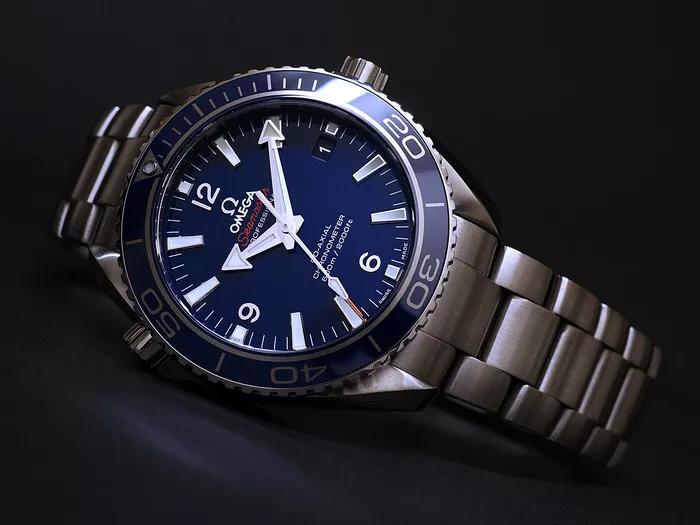Collaboration Details
The Omega x Swatch collaboration, known as the MoonSwatch, represents a groundbreaking partnership between two iconic brands. This collaboration leverages the heritage and prestige of Omega, particularly its association with the Omega Speedmaster Moonwatch, and the accessible, playful spirit of Swatch. The MoonSwatch was designed to democratize the luxury watch experience by offering a product that captures the essence of the Speedmaster but at a fraction of the price. The collaboration is part of a broader trend where high-end brands partner with more affordable counterparts to create products that appeal to a wider audience.
The MoonSwatch collection features eleven models, each named after a different celestial body, including the Moon, Mars, and Jupiter. These models are inspired by the Omega Speedmaster’s design but incorporate Swatch’s signature use of Bioceramic material. The resulting timepieces are visually striking, with vibrant colors and unique design elements that make them stand out in the market.
Pricing
One of the most striking aspects of the MoonSwatch is its pricing. Traditional Omega watches, especially the Speedmaster Moonwatch, are known for their high price tags, often running into several thousand dollars. In contrast, the MoonSwatch is priced at approximately $260, making it accessible to a much broader audience. This significant price difference can be attributed to several factors.
Firstly, the use of Bioceramic, a proprietary material from Swatch, allows for lower production costs compared to the premium metals and high-precision engineering used in Omega watches. Secondly, the MoonSwatch is produced on a larger scale, benefiting from economies of scale that reduce per-unit costs. Lastly, the marketing strategy focuses on volume sales rather than the exclusivity that typically characterizes luxury watch brands.
Design and Materials
The MoonSwatch’s design closely mirrors the Omega Speedmaster, maintaining iconic features such as the tachymeter scale, chronograph subdials, and overall aesthetic. However, the materials used in the MoonSwatch significantly differ from those in traditional Speedmasters. The use of Bioceramic, a blend of ceramic and bio-sourced plastic, is a key factor in reducing costs. This material is not only cheaper to produce but also allows for a range of vibrant colors and innovative designs that might be more challenging with traditional watch materials.
The movement inside the MoonSwatch is another area where costs are cut. Unlike the high-precision mechanical movements found in Omega watches, the MoonSwatch uses a quartz movement, which is significantly less expensive to produce and maintain. This choice of movement also aligns with Swatch’s expertise and heritage in creating reliable, affordable quartz watches.
Market Response
The market response to the MoonSwatch has been overwhelmingly positive. Upon its release, the collection generated significant buzz, with long lines at Swatch stores and rapid sellouts online. The collaboration’s success can be attributed to several factors, including the novelty of the partnership, the attractive pricing, and the appeal of owning a piece of Omega’s legacy at a fraction of the cost.
The resale value of the MoonSwatch has also been notable. Despite its relatively low retail price, the demand has driven up prices on the secondary market, with some models selling for several times their original price. This phenomenon reflects the desirability of the watch and the effective marketing strategy behind its launch.
Economic Principles
Understanding the economic principles of supply and demand helps explain the pricing of the MoonSwatch and its impact on the market. The MoonSwatch leverages the scarcity principle, where limited availability increases perceived value and demand. By producing a limited number of units and creating a buzz around each release, Swatch ensures that each launch is met with high demand and rapid sellouts.
In contrast, vintage Omega watches, particularly those with historical significance, follow different economic dynamics. Their high prices are driven by rarity, historical value, and the craftsmanship involved in their creation. The scarcity of vintage models, combined with their desirability among collectors, ensures that prices remain high and continue to appreciate over time.
Brand Strategy
Swatch’s brand strategy with the MoonSwatch collaboration is a masterclass in market positioning and brand synergy. Swatch, known for its affordable, trendy watches, brings accessibility and fun to the collaboration, while Omega contributes its prestige and legacy. This strategy not only broadens Swatch’s market reach but also introduces Omega to a younger, more diverse audience.
The collaboration also fits into a broader trend of high-low partnerships in the fashion and luxury industries. By collaborating with Omega, Swatch taps into the luxury market without alienating its core customer base. This approach enhances Swatch’s brand equity and market presence while reinforcing Omega’s aspirational appeal.
Consumer Behavior
The success of the MoonSwatch can also be attributed to evolving consumer behavior, particularly among younger generations. Gen Z and Millennials are drawn to limited-edition drops and collaborations, valuing uniqueness and the experience of owning exclusive items. The MoonSwatch taps into this trend by offering a limited-edition product that combines the allure of Omega with the accessibility of Swatch.
Additionally, these generations are more price-sensitive and value-conscious, making the MoonSwatch’s pricing particularly appealing. The collaboration allows them to experience a taste of luxury without the hefty price tag, aligning with their spending habits and preferences.
Conclusion
The Omega x Swatch MoonSwatch is a fascinating case study in brand collaboration, market strategy, and consumer behavior. By combining the strengths of both brands, the collaboration has created a product that is both desirable and accessible. The MoonSwatch’s affordable pricing, innovative design, and strategic marketing have made it a standout success in the watch industry. As consumer preferences continue to evolve, collaborations like the MoonSwatch offer valuable insights into how brands can adapt and thrive in a dynamic market.

